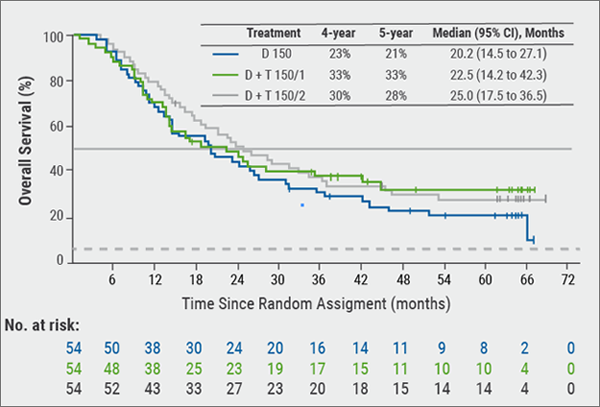https://doi.org/10.55788/f1728e54
As Prof. Alexander Navarini (University Hospital of Basel, Switzerland) pointed out, an area where AI will crucially change the field of dermatology is the diagnosis of psoriasis [1]. AI-driven diagnostic tools are particularly valuable in identifying early manifestations of psoriasis.
AI-driven diagnostic tools
Machine-learning models, trained on large datasets of dermatological images, have shown to accurately differentiate psoriasis from other skin conditions with high precision. Multiple convolutional neural networks (CNNs) have shown to be competitive with human dermatologists. In a Chinese study, for example, the percentage of misdiagnoses by the AI model was 4%, versus 10% by dermatologists [2]. At present, 2 dermoscopy-driven models can successfully distinguish psoriasis from other erythrosquamous conditions, e.g. scalp psoriasis from seborrheic dermatitis, and, thus, provide real-time diagnostic support [3]. Such systems can reduce diagnostic errors and provide support for non-dermatologists, for example in teledermatology cases. A study showed that psoriasis diagnosis with AI support could be improved from 10% (with general practitioners) up to 12% (with nurses) [4].
Every year, 10 billion text searches for skin, hair, and nails are performed in Google. So far, no flood of patients is looking for confirmation of “Google diagnoses” but this might change in the future. There was an initial plan to make Google Lens a full “Derm-Assistant” with history taking including skin type and duration of symptoms. This plan has been officially abandoned due to lacking FDA approval. Currently, Google Lens has an integrated image search that indicates visual matches only. ChatGPT4 by OpenAI also allows image classification. A comparison between ChatGPT and Google Lens evaluating 200 images of psoriasis showed that 190 cases were diagnosed correctly by GPT4 and 168 by Google Lens [5].
AI assessment of PASI scores
Score evaluation is another interesting AI application. Psoriasis Area Severity Index (PASI) assessments can be time-consuming and scores can vary between dermatologists [6]. Thus, a validated AI tool that assesses psoriasis severity would be a great time-saving application. A small study showed that assistance from a smartphone-based PASI evaluation improved the PASI scoring performed by medical students and dermatologists. A drawback of PASI evaluation by AI is the fact that most current systems are trained on white skin only, where erythema is easily visible [1]. Thus, re-training with pigment-rich images is warranted. Prof. Navarini argued that clinical scores will be among the most useful services offered by AI.
Other applications
Another valuable application might be to embed a treatment suggestion system within the diagnostic algorithm to suggest the best treatment options for psoriasis variants using a Multi-Criteria Decision Making (MCDM) method [7]. Finally, large language models (LLM) such as Llama 3.1 will lead to less or no documentation in practices and clinics. Prof. Navarini stated that audio-LLM combinations have impacted the daily life of physicians like nothing since the introduction of the electronic patient file. According to his prediction, they will be rapidly adopted in private practice and later in hospitals, and can save time and money.
- Navarini A. AI in psoriasis Care – A vision for the future. Abstract 7829, EADV 2024 Congress, 25–28 September, Amsterdam, the Netherlands.
- Zhao S, et al. J Eur Acad Dermatol Venereol 2020;34:518-24.
- Goessinger EV, et al. AM J Clin Dermatol 2024; Sep 11. DOI: 10.1007/s40257-024-00883-y.
- Jain A, et al. JAMA Netw open 2021;4:e217249
- Praveenraj T, et al. Int J Dermatol 2024; Jul 22. DOI: 10.1111/ijd.17392.
- Okamoto T, et al. J Eur Acad Dermatol Venereol 2022;36:2512-5.
- Yaseliani M, et al. Comput Ind Eng 2024;187:109754.
Copyright ©2024 Medicom Medical Publishers
Posted on
Previous Article
« Deuruxolitinib significantly improves hair satisfaction in AA Next Article
Imsidolimab potential future therapeutic avenue for generalised pustular psoriasis »
« Deuruxolitinib significantly improves hair satisfaction in AA Next Article
Imsidolimab potential future therapeutic avenue for generalised pustular psoriasis »
Table of Contents: EADV 2024
Featured articles
Delgocitinib cream outperforms oral alitretinoin in chronic hand eczema
News in Atopic Dermatitis
3-Year results highlight durable effects of IL-13 inhibitor in AD
IL-22RA1 inhibition shows potential in atopic dermatitis
Lifelong psychosocial burden linked to early-onset atopic dermatitis
Second-generation selective PDE4 inhibitor shows promise in AD
What’s New in Prurigo Nodularis and Lichen Planopilaris
Prurigo nodularis: long-term treatment decreases relapse events
JAK1 inhibitor shows promising long-term efficacy in PN
Hand Eczema: End of the Therapeutic Draught
Delgocitinib cream outperforms oral alitretinoin in chronic hand eczema
Atopic hand eczema: similar treatment success for dupilumab and topical delgocitinib
Hidradenitis Suppurativa: New Medications on the Horizon
Targeting IL-17A offers a promising treatment perspective in hidradenitis suppurativa
Bimekizumab shows sustained 2-year efficacy in hidradenitis suppurativa
Familial hidradenitis suppurativa tied to metabolic disease
Psoriasis in 2024
Imsidolimab potential future therapeutic avenue for generalised pustular psoriasis
A new era of care: Artificial intelligence in psoriasis
New Developments in Hair Disorders
Deuruxolitinib significantly improves hair satisfaction in AA
Topical pan-JAK inhibitor mitigates inflammatory biomarkers in frontal fibrosing alopecia
Miscellaneous
Vitiligo: Prolonged facial re-pigmentation maintained with continued ruxolitinib cream
Anti-KIT antibody: the next frontier in CSU treatment?
New targets identified for acute and chronic wound healing
Interesting Posters
PsoBest registry: Biologics dominate treatment for moderate-to-severe psoriasis
Semaglutide improves outcomes for patients with obesity and HS
Advanced BCC: histological subtype and time to complete response may predict tumour recurrence
Related Articles

December 20, 2018
CNNs and targeted combination therapy

October 4, 2021
ESMO 2021 Highlights Podcast
© 2024 Medicom Medical Publishers. All rights reserved. Terms and Conditions | Privacy Policy
HEAD OFFICE
Laarderhoogtweg 25
1101 EB Amsterdam
The Netherlands
T: +31 85 4012 560
E: publishers@medicom-publishers.com

